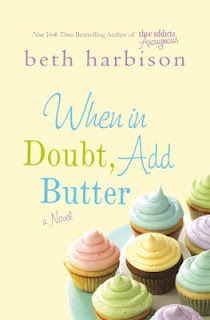Reviewed by Ambrea
For
years, Aquaman has reigned supreme as king of the seas, but, on the surface,
he’s discounted as a second rate hero and disrespected accordingly. As the child of a human and an Atlantean,
Arthur—better known by his Aquaman moniker—is accepted by neither the race of
his father nor the kingdom of his mother and he’s exhausted by the politics, so
he decides to do as his father does: he
decides to seclude himself from the world in the light house he called home for
most of his childhood.
But
Aquaman knows he can’t escape the obligations that his power and his authority
give him. A terrifying new threat has
emerged from the deepest abyss, a horrifying race of creatures that are set on
devouring everything they can find—Aquaman included. Now, he must save the people who have long
disregarded and mocked him if he ever hopes to live up to his father’s memory
and, more importantly, uncover the secrets of the deep kept even from the king
of the seas.
Aquaman
is frequently disregarded as a foolish superhero or completely discounted in
the DC Universe, much like Adam West’s 1960s Batman; sometimes, he’s only ever used as the punchline of a joke
(think Big Bang Theory). He’s not the most popular superhero in the
comic book world, and even I’ll be the first to admit that he’s not one of my
favorites. However, in Aquaman:
The Trench, the first in the New 52 series by DC comics, Aquaman’s
reputation as a superhero is finally redeemed—and I am so excited.
I’ve
always had a specific picture of Aquaman in my mind: Aquaman of the Justice League series which aired on Cartoon Network in 2001. I was introduced to a different kind of hero,
a gruff and brooding king of the deep who rivaled Batman in his angst—and,
being an impressionable youth, I instantly respected him for his uncanny
strength, his ability to communicate with undersea life, and his absolute
loyalty to the people of Atlantis. He
was, I thought, pretty awesome.
And,
after reading The Trench, I feel like
I’ve reaffirmed my place in the Aquaman fandom.
Honestly,
it’s refreshing to see Aquaman in a new light.
I loved the humor in his story and, more importantly, I loved the
amazing character design. Artistically
speaking, both Arthur (honestly, I don’t think I knew his real name before I
read this volume) and Mera are beautifully designed. I liked the detail and the color, the
vibrancy of their characters; moreover, I loved the way they interacted as
characters with one another and the rest of the world. Geoff Johns, Ivan Reis, and Joe Prado do an
excellent job of depicting Aquaman as a superhero.
Aquaman
has an emotional depth and intricacy that, confidentially, I didn’t
expect. Arthur is tugged at by his urge
to protect mankind and his duty as the king of the seas, by his father’s
humanity and his mother’s kingdom beneath the waves. It’s an interesting dynamic that adds a layer
of complexity to his character and his story.
He wants to preserve humanity, but he doesn’t wish to destroy Atlantis
in the process; he wants to be human, but he knows he isn’t. I was immediately intrigued to see how his
story plays out.
Granted,
I found the pace to be a little quicker than I would like. It seemed like the story was in a hurry to
get somewhere, and I would have liked a little more time to dwell on Mera’s
history and Arthur’s background before he became known as Aquaman. However, it isn’t a deal breaker and it’s
only a slight blemish on a story that’s fantastic overall. It’s also a bit more violent than I expected,
but, I suppose, it’s to be expected when terrifying creatures creep out of the
deepest trenches in the ocean and seek out a new food source.
Overall,
I loved reading Aquaman. In fact, I think it’s one of my favorite
superhero comics of the year. It’s right
up there with the new Spider-Gwen, The Long Halloween, Hush, and Mark Waid’s Daredevil.
NOTE: We're running this review in honor of Rob-Con, Bristol's beloved comic book convention. It's this weekend, July 30 & 31, at Viking Hall. Visit them on Facebook or access the website here.
And, of course, visit them at Viking Hall!
NOTE: We're running this review in honor of Rob-Con, Bristol's beloved comic book convention. It's this weekend, July 30 & 31, at Viking Hall. Visit them on Facebook or access the website here.
And, of course, visit them at Viking Hall!













